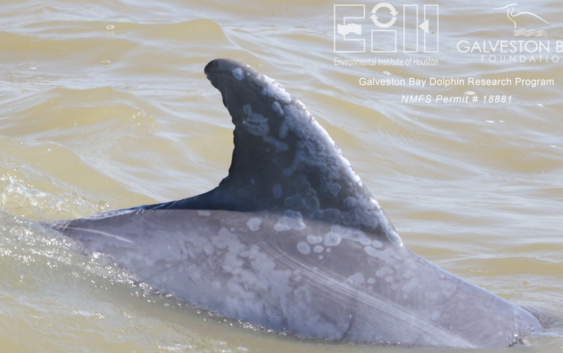- Before and after: See Dubai flooding from space
- No evidence of a tornado in Rock Hill, investigation determines
- Marking 15 years since 19,000 acre wildfire destroyed dozens of homes in Horry County
- 'I am so sorry, but we will do it again' Donald Trump calls off Wilmington rally due to severe weather
- Donald Trump forced to call off Wilmington rally due to severe weather
Hurricane Harvey 'significantly' impacted dolphins in Galveston Bay, researchers say

Following the flooding from Hurricane Harvey, researchers have observed a 73 percent drop in bottlenose dolphin encounter rates.
GALVESTON, Texas — Houston and Galveston-area residents weren’t the only ones to take a big hit from Hurricane Harvey. Our friends in the ocean also were also significantly impacted by the intense flooding in 2017.
According to a study by the Galveston Bay Dolphin Research Program, flooding from Harvey resulted in a 73 percent drop in bottlenose dolphin encounter rates in the upper Galveston Bay. Researchers also discovered freshwater skin lesions on 96 percent of the observed dolphins.
“Encounter rates decreased from 1.09 dolphins per linear kilometer (d/km) in August 2017 before Harvey to 0.29 d/km in September 2017,” authors of the story wrote. “Ninety-six percent of dolphins observed in upper Galveston Bay following the hurricane had freshwater skin lesions.
Out of the 96 percent of dolphins with freshwater skin lesions, 65 percent of those had moderate to highly extensive lesions. After salinity levels increased, dolphins returned to upper Galveston Bay and the number of skin lesions on the dolphins decreased, but many of them had lesions for at least four months after Hurricane Harvey, the study claimed.
Researchers said the effects of freshwater flooding events and how and when dolphins utilize areas in the Galveston Bay is essential to manage and maintain healthy coastal dolphin populations. Currently, the Galveston Bay Dolphin Research Program has seen and cataloged more than 700 dolphins with unique markings in the busy waters of the bay. These include both dolphins that made the bay their permanent home and dolphins temporarily occupying the bay.
There is an opportunity for you to support his research and virtually adopt or name a bottlenose dolphin in the upper Galveston Bay for just $200.
For more info on how to adopt, click here.